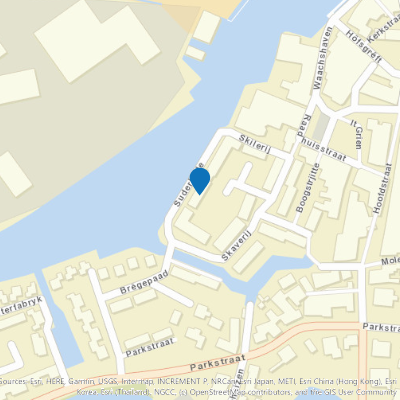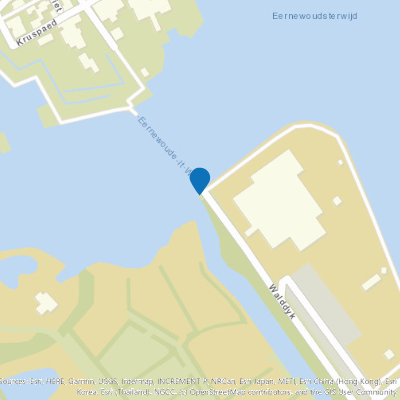Locations
3289 to 3312 of 5106 results
-
Mirnserklif
Mirnserklif Mirns
Mirns
from your location
-
Koekoek en de Waard
Koekoek en de Waard IJlst
IJlst
from your location
-
Haven Suderkade Grou
Haven Suderkade Grou Grou
Grou
from your location
-
Veerpont Hin en Wer (It Wiid)
Veerpont Hin en Wer (It Wiid) Eernewoude
Eernewoude
from your location
-
Eysinga State - Vakantievilla Eyland 5p
Eysinga State - Vakantievilla Eyland 5p Sint Nicolaasga
Sint Nicolaasga
Direct boekbaar
from your location
-
The liberation of Friesland 1
The liberation of Friesland 1
In early April, it became clear that the liberation of Friesland was imminent. Although the province had not suffered a real Hunger Winter like other parts of the Netherlands, there were severe shortages of just about everything. And the terror of the occupying forces was growing. This also led to increased resistance against the occupying forces. The battle between the two was tougher than ever in early 1945.
In Friesland, assault groups known as Knokploegen (KP) were responsible for most acts of resistance. But there were other groups too. On the orders of the Dutch government in London, all these groups were merged into the Dutch Domestic Armed Forces (NBS). In Friesland, this happened on 12 December 1944.
The NBS, popularly referred to as the BS, gave the armed resistance an organisation with a clear structure. The NBS was also supposed to play a role in the upcoming liberation. To this end, resistance groups were provided with weapons from autumn 1944. These were dropped from the air.
On 8 April, Radio Orange broadcast the message "The bottle is empty." This was the signal for the NBS to start carrying out sabotage operations 36 hours later. The aim was to make it as difficult as possible for the Germans to defend themselves against the approaching Allied forces.
The resistance did this by putting bridges and railways out of order, blocking waterways and blocking roads. The response of the occupying forces was ruthless. In retaliation, dozens more prisoners were shot at different times and places.Once the Canadians entered Friesland on 12 April, they were supported extremely effectively by the Frisian resistance. Because it was superbly organised, they were able to help the Canadians take control of important bridges, repair damaged bridges, and advise on the most favourable route.
By 18 April, the whole province was liberated except for the Wadden Islands (these were liberated in late May and in June). Compared to other provinces, there was little fighting in Friesland. Overall, the few thousand German troops who had been unable to flee Friesland were defeated by the Canadians relatively quickly.
The commander of the Royal Canadian Dragoons, Lieutenant Colonel Landell, praised the actions of the resistance by stating "Friesland liberated herself." While that may be a bit of an exaggeration, the actions of the Frisian resistance undoubtedly accelerated the liberation. And reduced the number of casualties on the Allied side.
In confrontations with German troops and their Dutch accomplices, at least 31 resistance fighters lost their lives. On the Allied side, at least eleven Canadians and one Frenchman were killed. The fighting and shelling also resulted in dozens of civilian casualties. The number of casualties on the German side is not known, but probably ran into the hundreds. With 320 houses destroyed and 4,000 damaged and 80 bridges destroyed, Friesland was materially the least damaged province in the Netherlands.
 Willemsoord
Willemsoord
from your location
-
-
Vrouw met duiven
Vrouw met duiven Harlingen
Harlingen
from your location
-
FrieWheelers Stavoren
FrieWheelers Stavoren Stavoren
Stavoren
from your location
-
Pannenkoekboerderij Koepelbos
Pannenkoekboerderij Koepelbos Oldeberkoop
Oldeberkoop
from your location
-
Jachtwerf Hemmes Molenaar / J.M. Yachting
Jachtwerf Hemmes Molenaar / J.M. Yachting Woudsend
Woudsend
from your location
-
Kinderspeurtocht Heeg
Kinderspeurtocht Heeg Heeg
Heeg
from your location
-
Memorial De Hoanne
Memorial De Hoanne Tjalhuizum
Tjalhuizum
from your location
-
Activiteitencentrum Lauwersnest
Activiteitencentrum Lauwersnest Lauwersoog
Lauwersoog
from your location
-
Hotel Nap
Hotel Nap West-Terschelling
West-Terschelling
from your location
-
Lutz Watervilla's - Wettervilla Santjin
Lutz Watervilla's - Wettervilla Santjin Balk
Balk
Direct boekbaar
from your location
-
Coöperatieve zuivelfabriek "De Volharding",
Coöperatieve zuivelfabriek "De Volharding", dronryp
dronryp
from your location
-
Snoozz Hotels - Comfort kamer cityview
Snoozz Hotels - Comfort kamer cityview Bolsward
Bolsward
Direct boekbaar
from your location
-
Gesneuveld op de dag van de bevrijding
Gesneuveld op de dag van de bevrijding
Op zondag 15 april 1945 – de dag die geldt als de bevrijdingsdag van Friesland – kwam hier in Kiesterzijl door Duits geweervuur Jitze Pieter van Dijk om het leven, toen de eenheid van de Nederlandse Binnenlandse Strijdkrachten (NBS) waar hij deel van uit maakte, op een groepje zich terugtrekkende Duitse soldaten stootte.
In afwachting van de komst van de Canadezen, die Leeuwarden al hadden bereikt, wilden leden van de NBS Franeker alvast bezetten, nadat duidelijk was geworden dat de Duitsers de stad zonder strijd te leveren aan het verlaten waren en zich terugtrokken richting Harlingen.
Een groep van enkele tientallen NBS-ers, meest jongemannen uit de buurt, gekleed in blauwe overalls (het bekende NBS-uniform) vertrok aan het begin van de middag op de fiets vanuit Achlum. De bedoeling was om over de Slachtedijk naar de Rijksweg ten westen van Franeker te gaan, om van die kant de stad binnen te trekken. Ze waren bewapend met vanuit Engeland gedropte Enfield geweren, stenguns, handgranaten en een bazooka.
Toen ze net over de brug van Kiesterzijl waren, kwam er vanuit Franeker over de oude Rijksweg nog een verlaat groepje van zo’n twaalf Duitsers aanfietsen. Er ontstond een vuurgevecht, waarbij de NBS-ers dekking zochten in de berm. Jitze Pieter van Dijk, een 23-jarige boerenzoon uit Hitzum, bukte niet diep genoeg en werd dodelijk getroffen in zijn rug.
De NBS-ers trokken zich daarop terug, om lopend via de zuidelijker gelegen spoorbaan alsnog veilig in de stad te komen. De Duitsers reden door naar Harlingen, met achterlating van enkele slachtoffers. ’s Avonds keerden ze met versterking terug om hun kameraden op te halen. Inwoners van Herbaijum werden daarbij gebruikt als menselijk schild.
Het boerderijtje van Ale Houtsma, dat hierachter stond en waar de NBS-ers hun fietsen hadden achtergelaten werd als represaille in brand gestoken. Op datzelfde moment naderden de eerste Canadese verkenners Franeker al vanuit de richting Leeuwarden.
Na de oorlog is, tegenover het gemeentehuis, een straat naar Jitze Pieter van Dijk genoemd. Van Dijks ouderlijke boerderij in Hitzum was een belangrijke uitvalsbasis van het plaatselijke verzet. In het hooi lagen de gedropte wapens verborgen.
 Herbaijum
Herbaijum
from your location
-
-
Kokkels en oesters rapen bij de Oeltjes
Kokkels en oesters rapen bij de Oeltjes Oosterend Terschelling
Oosterend Terschelling
from your location
-
Woonboot Oudega
Woonboot Oudega Oudega (gemeente Súdwest-Fryslân)
Oudega (gemeente Súdwest-Fryslân)
Direct boekbaar
from your location
-
Rent to Enjoy - Houseboat Chill
Rent to Enjoy - Houseboat Chill Warns
Warns
Direct boekbaar
from your location
-
Minicamping De Frije Fries
Minicamping De Frije Fries Rotstergaast
Rotstergaast
from your location
-
Op de hoek van de Lauwerszeedijk
Op de hoek van de Lauwerszeedijk Lauwersoog
Lauwersoog
from your location
-
De Houtwiel Nature Reserve
De Houtwiel Nature Reserve Broeksterwâld
Broeksterwâld
from your location


